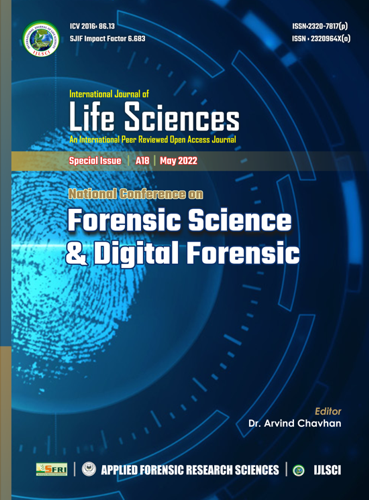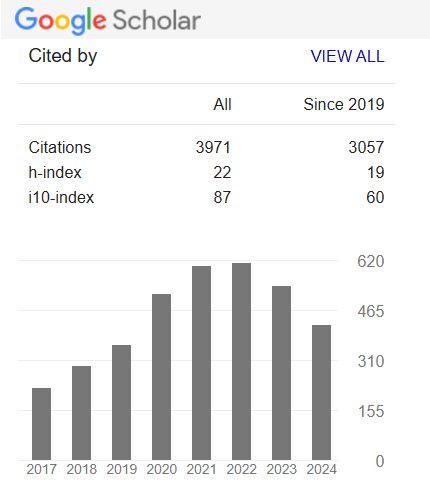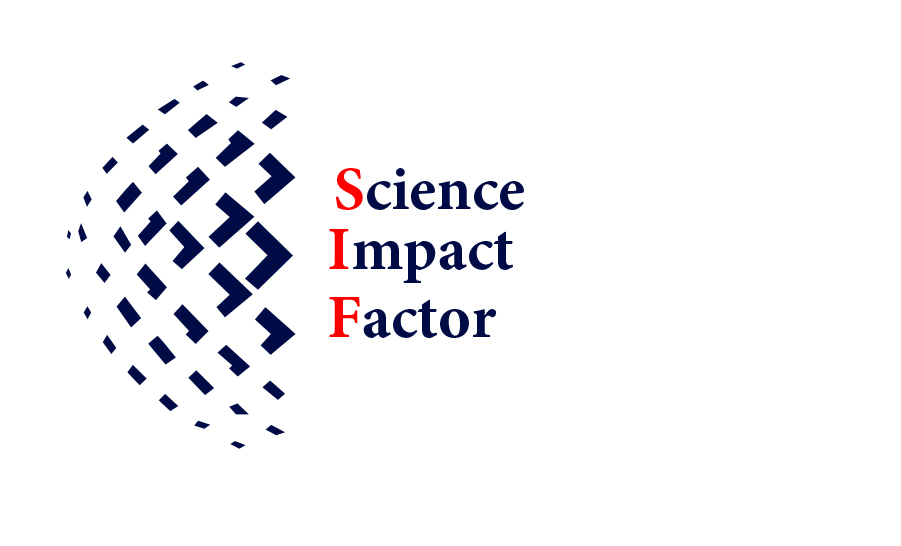Chemometrics in Forensic Science
Keywords:
Multivariate, methods, SIMCS, Forensic, SVMAbstract
The last decade has seen the application of the chemometric methods combined with analytical techniques for characterization and discrimination of samples, which leads to the informative and representative examinations of the samples. Many research articles with reference to the use of chemometrics in forensic science have been published. This review has been divided into various sections which include chemometrics, its history, multivariate methods, and the application of chemometrics in various disciplines of forensic science. Chemometric methods are expedient due to their ease of interpreting results, reliability, and speed. Advanced modeling methods such as SIMCA and SVM are gaining popularity. It is suggested that these new techniques and mathematical/statistical methods should be utilized in forensic science casework to get statistical confidence in the results.
Downloads
References
Coyle T (2010) in Crime Scene to Court: The Essentials of Forensic Science, ed. P. White, RSC Publishing, Cambridge, 2010, pp. 106–126
Roux C and Robertson J (2013) in Encyclopedia of Forensic Sciences, ed. J. A. Siegel and P. J. Saukko, Academic Press, Waltham, 2nd edn, pp. 279–285.
Saferstein R, Forensic Science: From the Crime Scene to the Crime Lab, Pearson Education, Upper Saddle River, NJ, 2009.
Jackson ARW and Jackson JM (2011) in Forensic Science, Pearson Education, Harlow, England, 3rd edn, 2011, pp. 1–14.
Smith R, in Forensic Chemistry: Fundamentals and Applications, ed. J. A. Siegel, John Wiley & Sons, Chichester, UK, 2016, pp. 469–503.
R. G. Brereton, Chemometrics: Data Analysis for the Laboratory and Chemical Plant, John Wiley & Sons, London, 2003.
S. L. Morgan and E. G. Bartick, in Forensic Analysis on the Cutting Edge: New Methods for Trace Evidence Analysis, ed. R. D. Blackledge, John Wiley & Sons, New Jersey, 2007, pp. 333–374.
A. M. Christensen, C. M. Crowder, S. D. Ousley and M. M. Houck, J. Forensic Sci., 2014, 59, 123–126.
I. E. Dror, D. Charlton and A. E. Péron, Forensic Sci. Int., 2006, 156, 74–78.
S. M. Kassin, I. E. Dror and J. Kukucka, J. Appl. Res. Mem. Cogn., 2013, 2, 42–52
European Network for Forensic Science Institutes, 2015.
Forensic Science Regulator, Annual Report November 2014−November 2015, 2015.
Forensic Science Regulator, Annual Report November 2015−November 2016, 2017.
Forensic Science Regulator, Annual Report November 2016−November 2017, 2018.
Forensic Science Regulator, Annual Report November 2017−November 2018, 2019.
President’s Council of Advisors on Science and Technology, Forensic Science in Criminal Courts: Ensuring Scientific Validity of Feature-Comparison Methods, Washington DC, 2016.
National Academy of Sciences and T. N. A. Press, Strengthening Forensic Science in the United States: A Path Forward, Committee on Identifying the Needs of the Forensic Sciences Community, National Research Council, Washington DC, 2009.
Downloads
Published
How to Cite
Issue
Section
License
Copyright (c) 2022 Author

This work is licensed under a Creative Commons Attribution 4.0 International License.
Open Access This article is licensed under a Creative Commons Attribution 4.0 International License, which permits use, sharing, adaptation, distribution and reproduction in any medium or format, as long as you give appropriate credit to the original author(s) and the source, provide a link to the Creative Commons license, and indicate if changes were made. The images or other third party material in this article are included in the article’s Creative Commons license unless indicated otherwise in a credit line to the material. If the material is not included in the article’s Creative Commons license and your intended use is not permitted by statutory regulation or exceeds the permitted use, you will need to obtain permission directly from the copyright holder. To view a copy of this license, visit http://creativecommons.org/ licenses/by/4.0/











